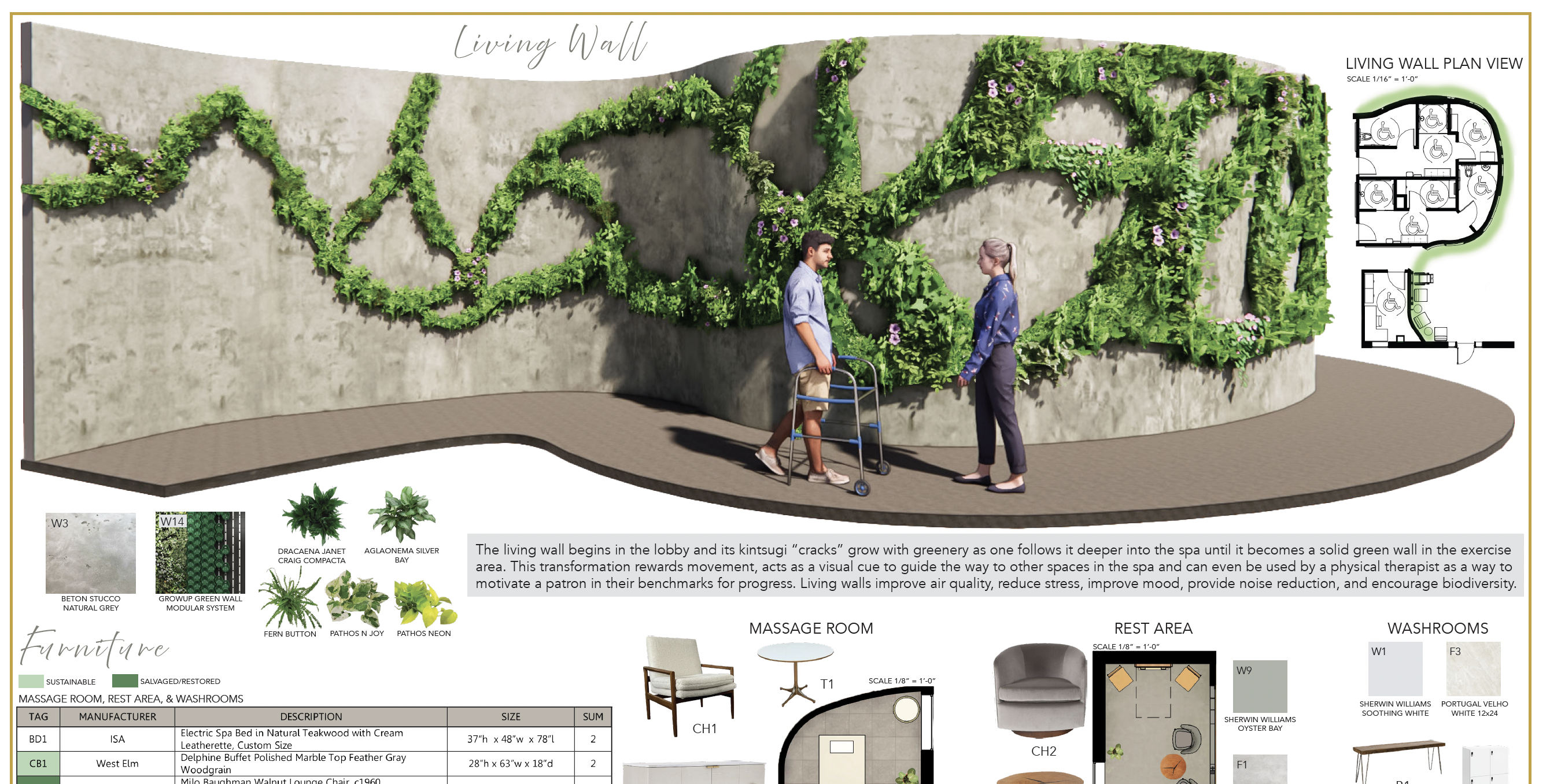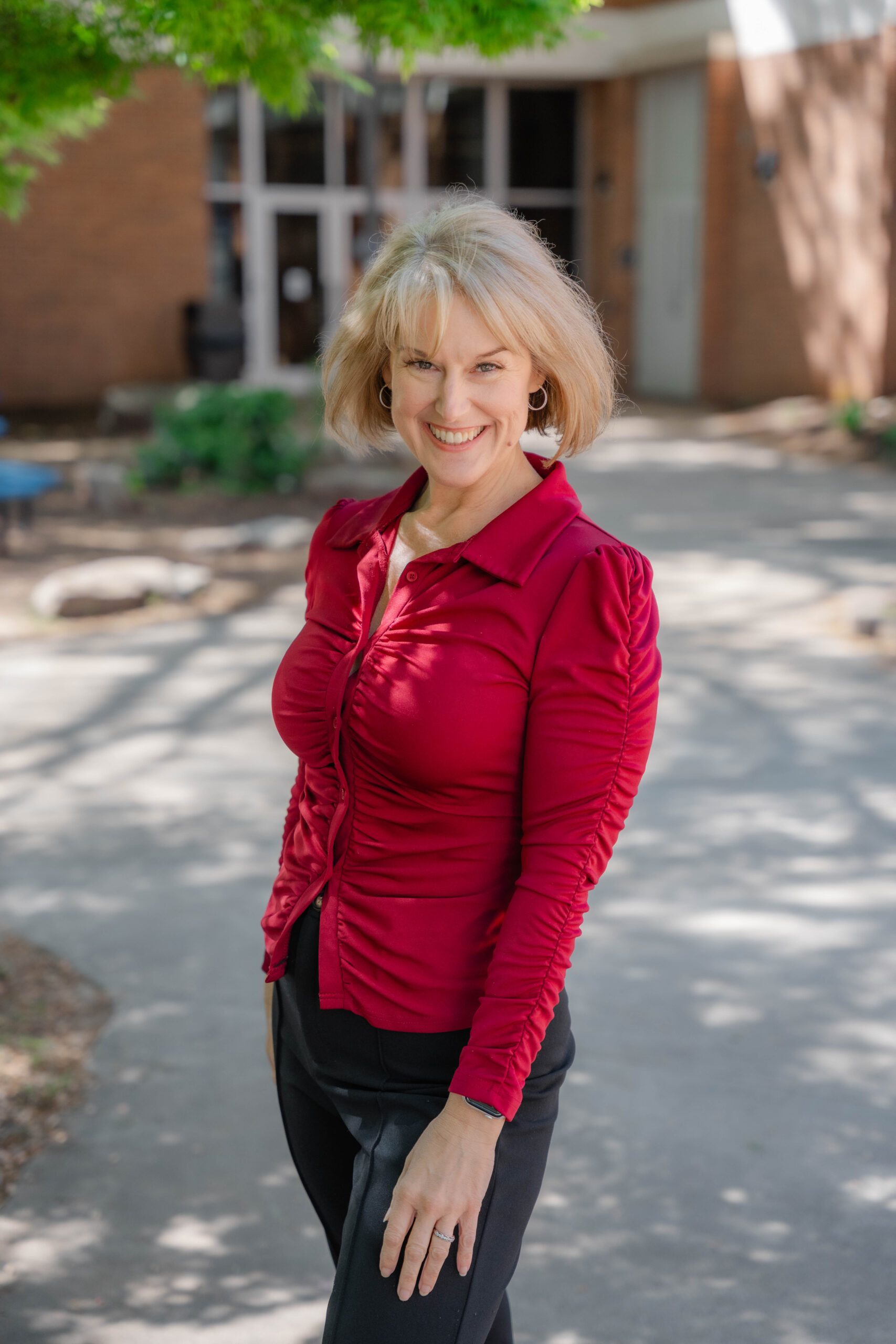Forsyth Tech News
Forsyth Tech Design Student Places Second in National Competition

Forsyth Tech News

This Community College Month, we’re bringing you stories about our students, alumni and community partners that highlight the amazing, life-changing work of Forsyth Tech. Keep reading to learn more about Jennifer Koerner, a second-year Architecture student that participated in a prestigious national design competition sponsored by the Bienenstock Furniture Library and Barbour Spangle Design. The competition featured student designers from both two-year and four-year design programs across the country.
Jennifer earned 2nd place in this highly competitive event! As part of her achievement, Jennifer will receive a monetary prize, and her project will be showcased on the Bienenstock Furniture Library website—a wonderful opportunity that will enhance her exposure as she prepares to transfer to UNC-G’s Interior Architecture program this fall and continue advancing in the field of architecture.
Can you tell us about the project you submitted for the competition? What was your inspiration behind the design?
The project focused on designing a spa specifically for individuals with Multiple Sclerosis. The program required designated spaces, adherence to building codes, and ADA accessibility. My inspiration came from the Japanese art of Kintsugi, where broken pottery is repaired with precious materials like gold, highlighting its history rather than concealing imperfections. Beyond its visual beauty, Kintsugi carries a profound philosophy—finding strength and meaning through adversity. I believe most of us can relate to personal growth that emerges from life’s challenges, and I wanted this concept to be embedded in the spa’s design, creating a space that embodies resilience, healing, and transformation.
What was the biggest challenge you faced during the design process, and how did you overcome it?
The biggest challenge was translating the vision in my mind into a form others could see. A central element of my design was a curved living wall featuring a Kintsugi-inspired pattern that evolved as one moved through the spa. I knew exactly how it should look and function, but executing it in 3D software was another story. Since Revit (the software program we use) doesn’t have a built-in feature for this kind of organic, layered detail, I had to hand-draw the living elements onto a curved surface in the software—a painstaking process that pushed the limits of both my patience and technical skills. When I finally created a version that worked aesthetically, functionally, and structurally, I made multiple copies—because after all that effort, I wasn’t taking any chances!
How did your experience in Forsyth Tech’s Architecture program help prepare you for this competition?
One of the biggest surprises in the program has been realizing just how much we grow from one project to the next. At the start, I’d look ahead at future assignments and think, “There’s no way I’ll be able to do that.” Last year, I saw the Bienenstock projects from previous students and thought it was beyond my skill level. But our architectural education is cumulative—each project builds on the last, and by the time we reach what once seemed impossible, we realize we are ready for it. This competition was no exception.
Who has supported or influenced you the most throughout your time at Forsyth Tech?
Todd Shoaf and Ja’Maul Redmond have been instrumental in my growth as a designer. Todd provides valuable guidance in idea generation and aesthetic evaluation, while Ja’Maul offers creative solutions for the technical aspects of architecture. Design is a balance of creativity and precision, and having both perspectives has been invaluable. Their mentorship has not only shaped my approach to this competition but also deepened my understanding of design as a whole.
What advice would you give to future students who might want to enter this competition?
This project is a marathon, not a sprint, and time management is crucial. I made it a point to work on it every day, even if just for 15 minutes—those small, consistent efforts add up. While the design phase is exciting, the technical aspects, like schedules, ADA compliance, and program requirements, demand just as much thought and attention. Most importantly, always remember that design is about people. Who are you designing for? What do they need? How can your work enhance their experience and quality of life? If you stay focused on that, your design will have real impact.

What role do you think competitions like this play in shaping a designer’s growth and confidence?
I thoroughly enjoyed this project, and I’m incredibly grateful to the Bienenstock Library for hosting this competition each year. It gave me the opportunity to combine my love of art history with hands-on design, allowing me to explore how historical influences can inform contemporary, functional pieces. I especially enjoyed designing custom elements that merge accessibility with style. This experience challenged me to think more deeply about how beauty and inclusivity can coexist in thoughtful, intentional ways.
Beyond my own experience, one of the most rewarding aspects was seeing my classmates grow throughout the process. It was amazing to watch their confidence build as they pushed through challenges and refined their designs. While I may not always recognize that growth in myself, I definitely saw it in them. Competitions like this push designers beyond their comfort zones, and in doing so, they shape not just our skills but also our ability to trust our instincts.